What did I do?
Happy New Year!!
This is a 10 year old Brittany female that presented for a 3/6 murmur. Owner says she is fine clinically but coughs on occasion. She was fairly cooperative but stressed and panting. General scanning revealed a slightly enlarged left ventricle(Cornell Index for LV diastole and systole were 1.98 and 1.12 respectively) and left atrium with a fairly normal right heart. Mitral regurge velocity was calculated at 6.1m/s in the tipped RPSLA(brick) view. Left ventricular fractional shortening was normal(40%) but considered low for a dog with moderate-severe mitral regurgitation. EPSS was 4mm. There was little or no atrial septal bowing. E velocity average was 1.25m/s with the E:A ratio reversed at 0.96. Color flow Doppler revealed minute aliasing at the level of the tricuspid valve in the left apical view. Continous wave doppler placed just behind the valve produced a TV regurge velocity of 4.36 m/s. This was also repeatable in the LPSLA right auricular view but I was only getting approximately 2m/s in the RPSLA tipped view. AO:PA ratio was .94, the RPADI was 40% and there was no obvious septal flattening noted in the RSA LV view. PA velocity was 0.98m/s. Hepatic veins and vena cava did not appear enlarged. There may be increased liver echogenicity. ALT and ALKP were significantly elevated on a presurgical panel. Coat appeared a bit thin and skin a bit fragile when clipping. Further testing; urinalysis and fecal, blood pressure, abdominal ultrasound, urine cortisol/creatine ratio, thyroid tesing +/- radiographs.
Q. Does the tricuspid regurgitation make sense in relation to possible post capillary causes (stage B2 MVD) or the right sided measures??
Thanks for having a read and a look!!

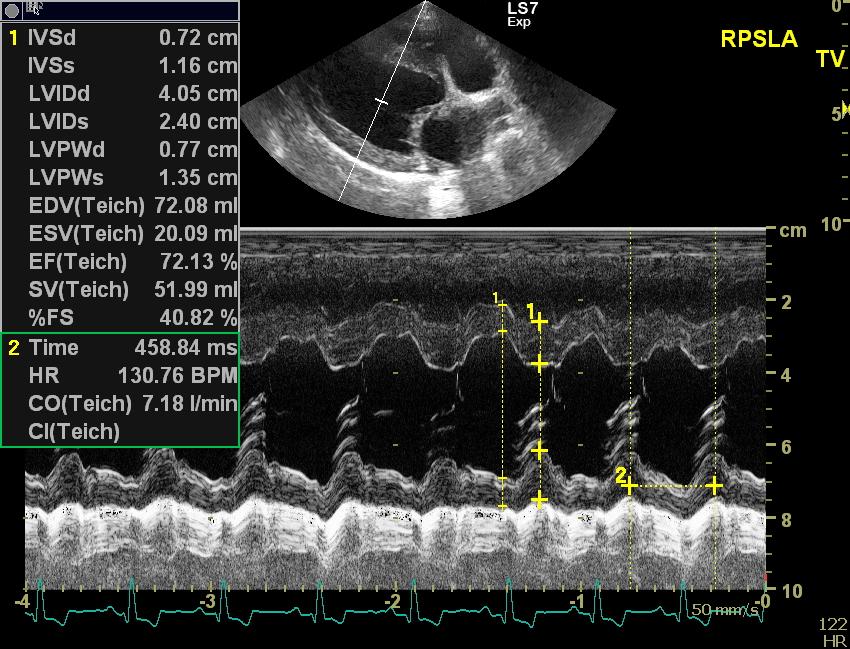
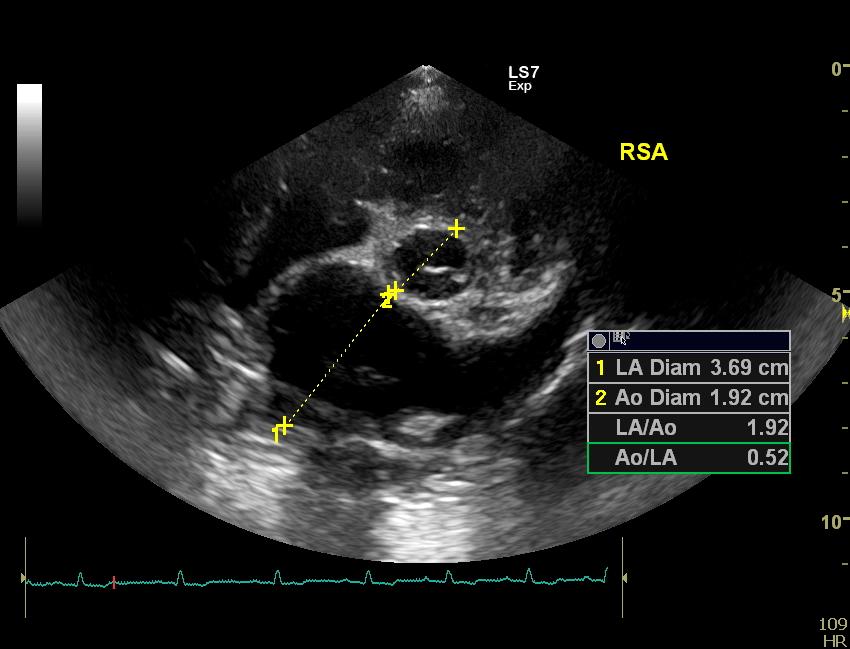
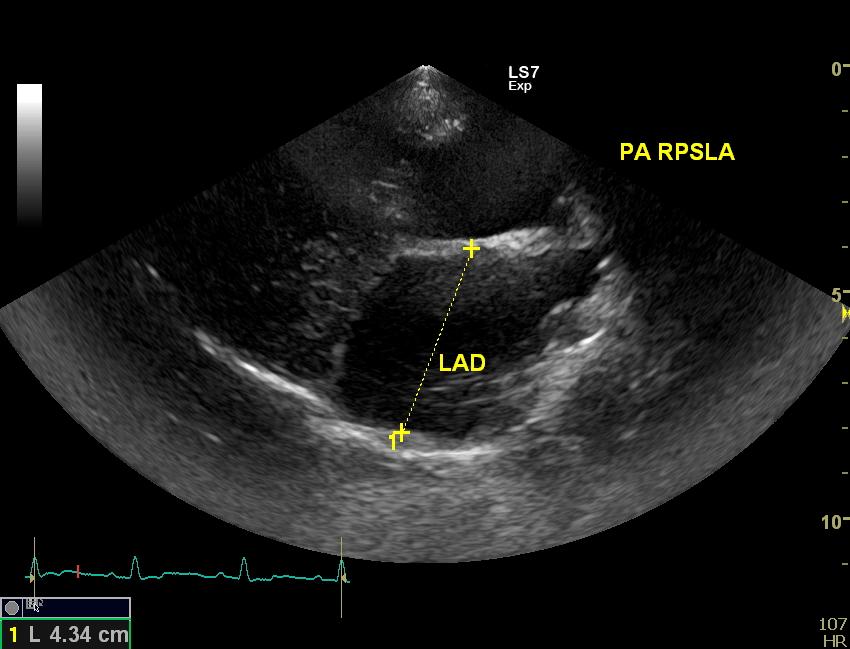
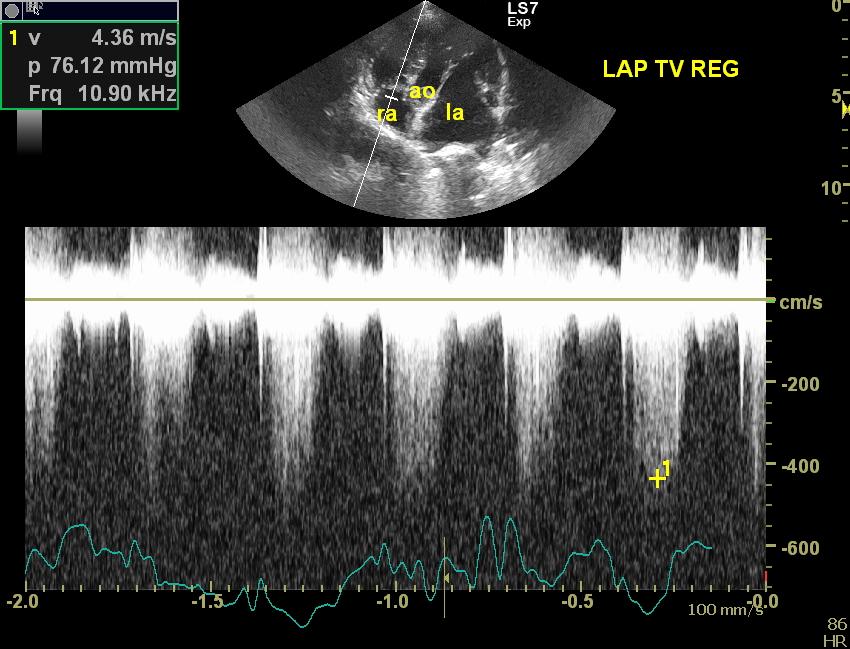
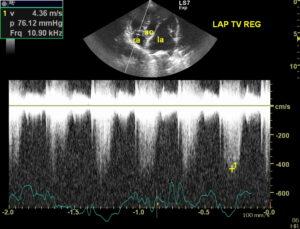
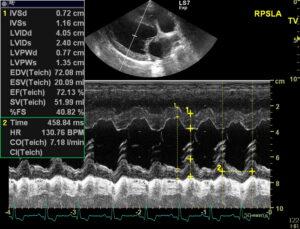
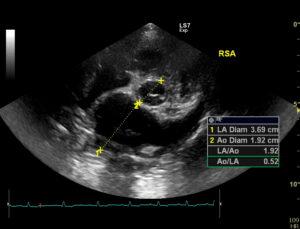
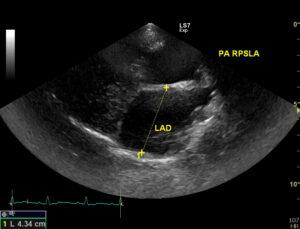
3 responses to “What did I Do??”
Well this is a B2 to B2+ given the heart base view shows the LA enlargement best but also the LA max with deviation of the atrial septum. Nobody could disagree on pimobendan here and no consensus but could consider acei and spironolactone. Then depends if the could is main stem bronshus impingement or concurrent respiratory disease/bronchomalacia and such.
Here are some downloads on this from our sonopath summit this year.
https://www.shopsonopath.com/product-page/is-there-a-b2-stage-for-mmvd-european-perspective
https://www.shopsonopath.com/product-page/cardiologist-s-round-table
Thank you! I have purchased and watched those videos (which were very good) and looked at the Delay study. What do you think about the right heart, the Tricuspid CW and the B2 B2+ staging of this dog in relation.? The ALT and ALKP were both around 1000units/L with no VAL or weight loss. So more investigation would be done in that area(including testing for Cushings). In using Pimobendin at this cardiac staging in a dog with elevated liver enzymes would you; start treatment now and monitor while evaluating liver further or try to get the liver sorted out prior to Pimobendin therapy?
What is your criteria for mild moderate and severe atrial septal bowing. I figured mild in this case but can see more significant bulging when I pause the video( just before last P wave). Is dilation of the L auricular appendage in the RSA considered moderate or severe or just indicates increased left atrial volume? In the Brick view I considered severe bowing where the LA is almost rounded and the pulmonary vein is coming in around the 1 o’clock position.
Thanks